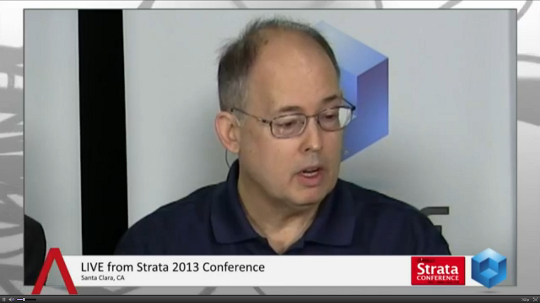 NEWS
NEWS
 NEWS
NEWS
 NEWS
NEWS
The new twist of in-memory data grids is adding a ScaleOut Analytics software that allows for “parallel data computation into the data grid.” What this does is allows you to “update fast-changing data and analyze it” within milliseconds, William Bain, Founder and CEO of ScaleOut Software explained in theCube, live from Strata 2013.
In-memory data grids were originally employed “to scale access to data, to make it universally available across clusters,” he added. Currently, ScaleOut solutions offer a near real-time update, and the analysis of fast-changing data allows for new use cases that benefit businesses across numerous fields. While this architecture allows for results returned within seconds, other systems that pull data from disk return them in hours or even days.
![]()
Expanding ScaleOut’s use cases, Bain expalined that the company has gained 370 customers over an 8 year period, and they typically “store less than a terrabyte of fast-changing data” such as news data, retail data and gaming servers information. These customers run operational systems in which data is updated and used in real time — instead of dealing with huge amounts of data, they deal with lesser amounts that change rapidly.
As far as Big Data deployments in the Enterprise segment are concerned, Bain stated that the main trend is an increase of integrations of Hadoop platforms and applications into operational deployments.
theCube co-host Dave Vellante of Wikibon pointed out that there currently is a lot of confusion around in-memory, flash arrays and disks when it comes to Big Data storage, with several players supporting flash as a slower, but less expensive solution. As people are trying to learn more, Vellante asked William Bain to comment on the right use cases for each available architecture.
“Traditional Hadoop is great for analyzing terabytes of data that are offline,” Bain said. Another solution would be to store data directly in-memory and be able to “do quick turns, perform many analyses on the same data.” In-memory has been used for years to store metadata. With the increasing use of Hadoop for SQL queries, new bottlenecks will arise. Doing parallel queries means returning large volumes of data which creates a network bottlenecks. ScaleOut solves this new issue by eliminating the need to move data off the server to both query and analyze existing data.
THANK YOU